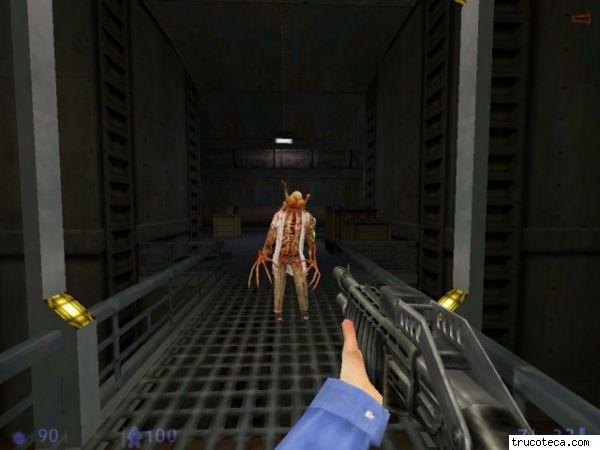HALF-LIFE REPLAY: 37.5% COMPLETE (3/8)
 Even though I hadn’t played either expansion, I “knew” Opposing Force was better than Blue Shift. Why? Because every review said so. “Too short”, they said of Blue Shift. “Two years too late”, they said. Indeed, Blue Shift came out in 2001, two years after Opposing Force and three after Half-Life itself. 3 years is a long time between a game and its expansion pack. Of course, Blue Shift was originally destined to be an exclusive for the Sega Dreamcast version of Half-Life, but Sega terminated the Dreamcast console just weeks before Half-Life was to be released. Gearbox repurposed Blue Shift into a PC expansion, and out it came to an audience that had already moved on.
Even though I hadn’t played either expansion, I “knew” Opposing Force was better than Blue Shift. Why? Because every review said so. “Too short”, they said of Blue Shift. “Two years too late”, they said. Indeed, Blue Shift came out in 2001, two years after Opposing Force and three after Half-Life itself. 3 years is a long time between a game and its expansion pack. Of course, Blue Shift was originally destined to be an exclusive for the Sega Dreamcast version of Half-Life, but Sega terminated the Dreamcast console just weeks before Half-Life was to be released. Gearbox repurposed Blue Shift into a PC expansion, and out it came to an audience that had already moved on.
We see this in the GameRankings scores. 86.1% for Opposing Force. A puny 69.0% for Blue Shift.
But there’s just one thing. Blue Shift is better.
The Good: Oh, it’s short all right. But it also doesn’t waste any time. It’s a tight 3-5 hour campaign. It may have followed in Star Trek: Elite Force’s footsteps, but the brevity doesn’t detract from the experience at all. Unlike Opposing Force, which felt the burning need to change and one-up everything about Half-Life, Blue Shift was perfectly content to just be more Half-Life. Security guard Barney Calhoun wielded the same crowbar/pistol/Colt/shotgun/M4 arsenal Gordon Freeman did. The game brought back the Black Mesa “real place” vibe of the original game, with some back-and-forth between rooms instead of a straight shot through a series of disconnected areas. But like Opposing Force, Blue Shift kept the jumping puzzles few and relatively easy. Instead, Blue Shift really focused on the combat with the Marines, and was much stronger for it. And to top it all off, Blue Shift carries the Half-Life High Definition Pack, which upgraded the character models (in both Blue Shift as well as the older HL games) considerably. If you’re playing these older HL games on Steam, follow this link to install the HL:HD Pack (you don’t need Blue Steam to do so, and it upgrades all of the original Half-Life games).
The Bad: Blue Shift doesn’t hit the same highs as Half-Life, or a couple of the neater sections of Opposing Force, though I think it was far more consistent than OpFor. While the jumping puzzles were few, they were still present, including another “floating platforms on Xen” puzzle, which doesn’t even bother to thinly veil the fact that it’s a pure jumping puzzle (at least the Xen jumping puzzle was considerably easier than its Half-Life counterpart). I can also understand players being annoyed at the fact that Blue Shift brings almost nothing brand new of its own to the table.
When you get right down to it, Blue Shift is purely an added chapter to the original Half-Life, nothing more. Whether that’s a bad thing or not comes down to personal preference. Opposing Force attempts to be more, but in doing so, I felt it came up a bit short. Blue Shift stuck to the Half-Life formula like a blueprint, and while there were few surprises, it was a good ride. I think it says a lot for all of these games that I’ve played through them sequentially in a short time frame, and still don’t find myself bored with the game’s formula.
Next up is Gearbox’s little-known third Half-Life expansion, Decay. While Decay was only officially released as an added chapter to the PlayStation 2 port of Half-Life, a mod team has been hard at work porting it to the PC (I previously stated on this blog that the mod was a Source-engine mod; this is not true. It is an original Half-Life mod, with a Source port potentially coming in the future). The mod’s unofficial release dates have been pushed back a few times, though the developers indicate that it’s close to release. That puts the brakes on my journey through the Half-Life saga for now. Hopefully we’ll see a December release for the game.